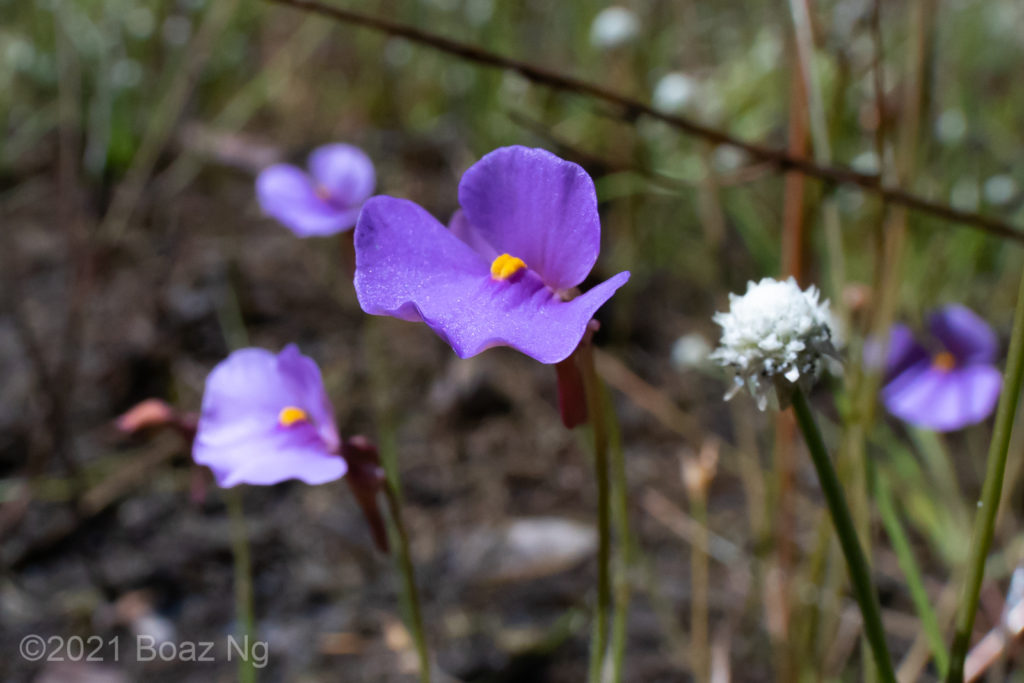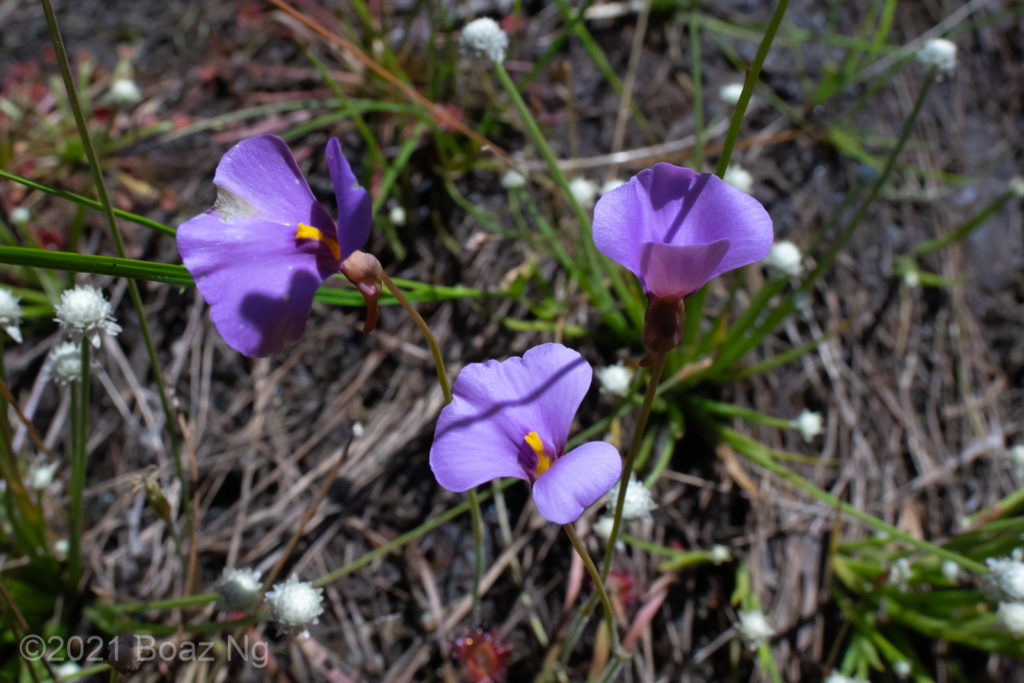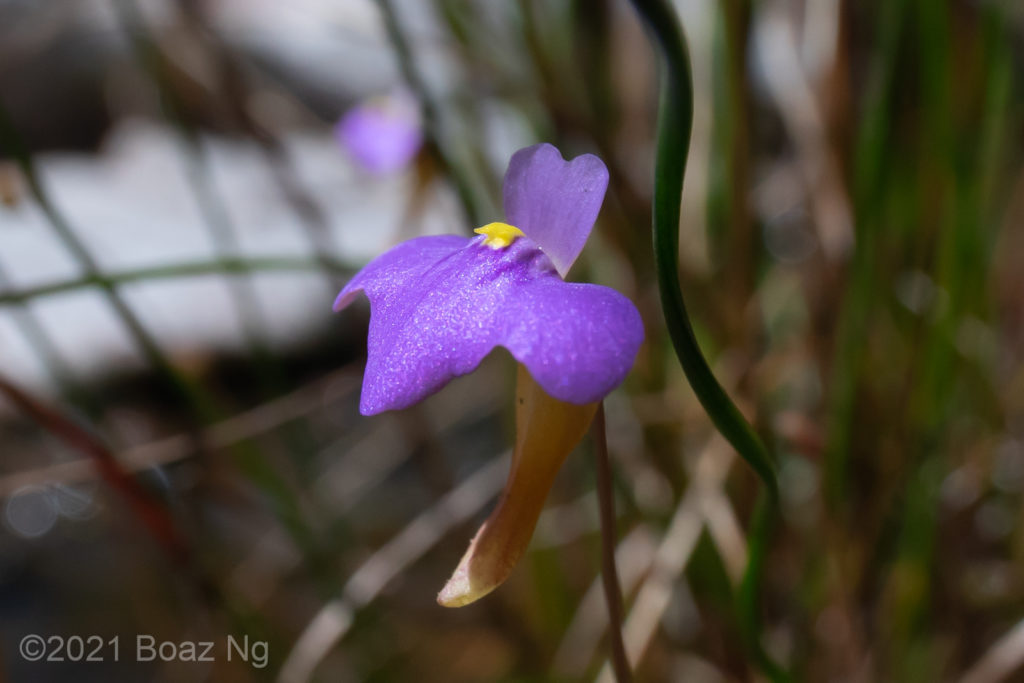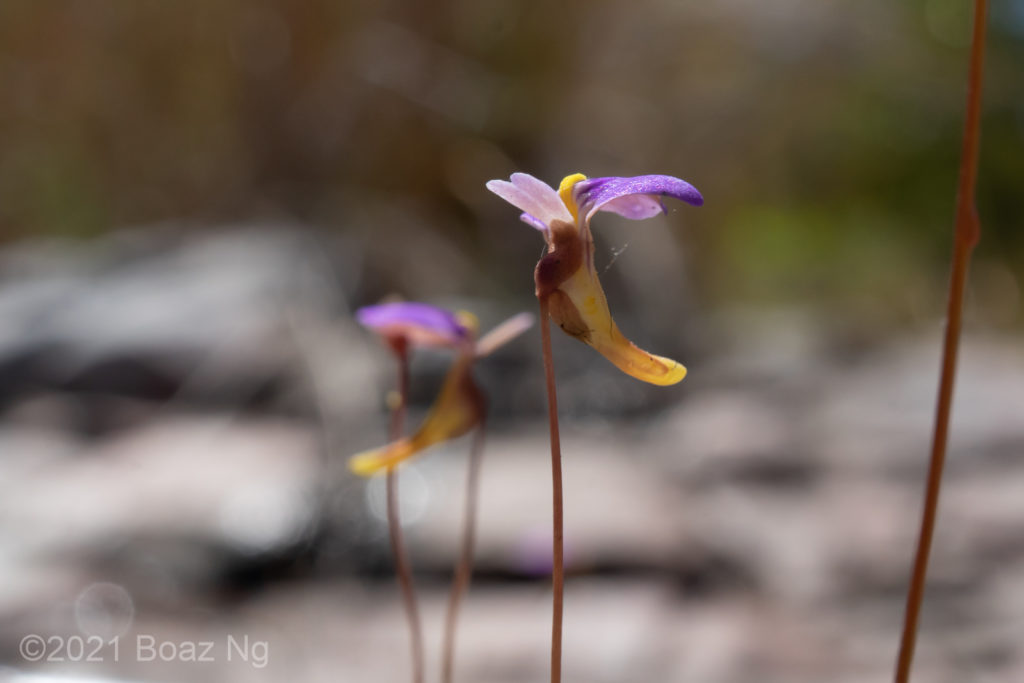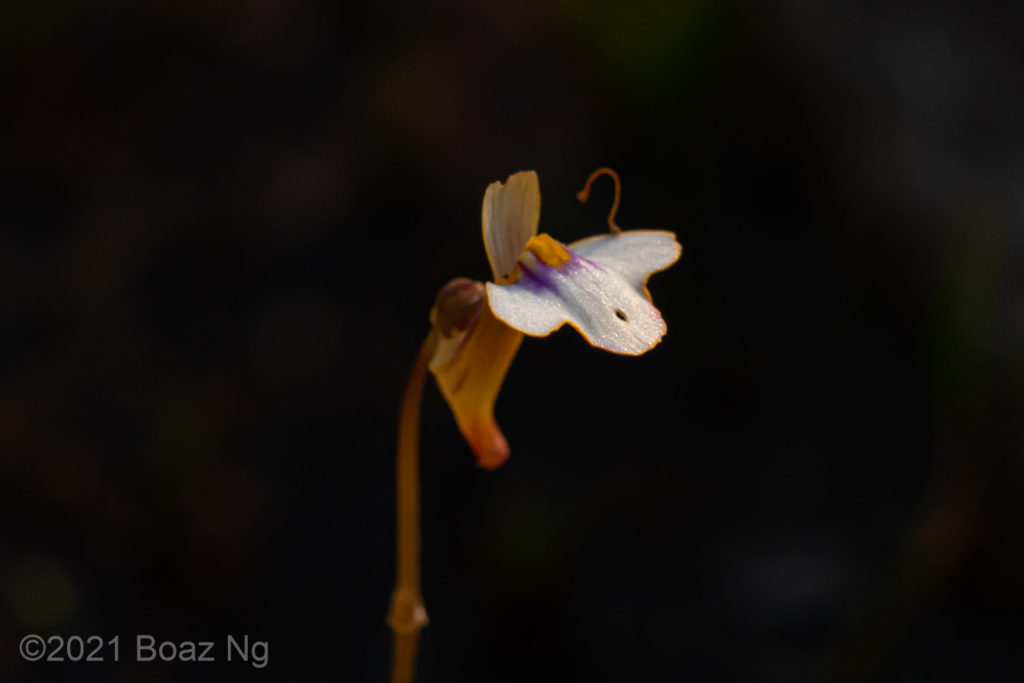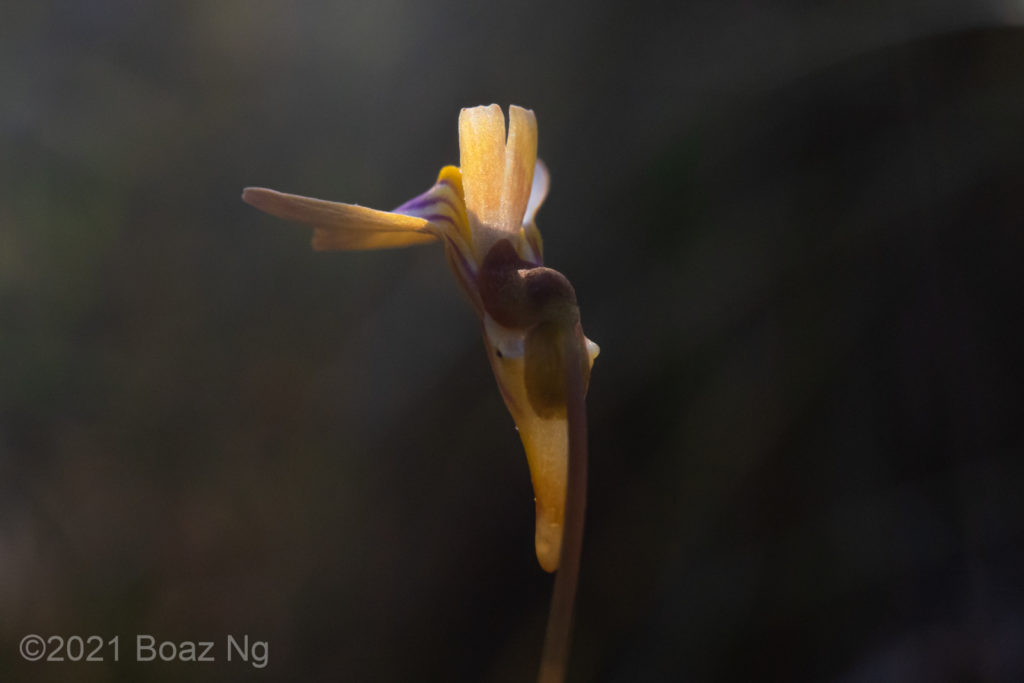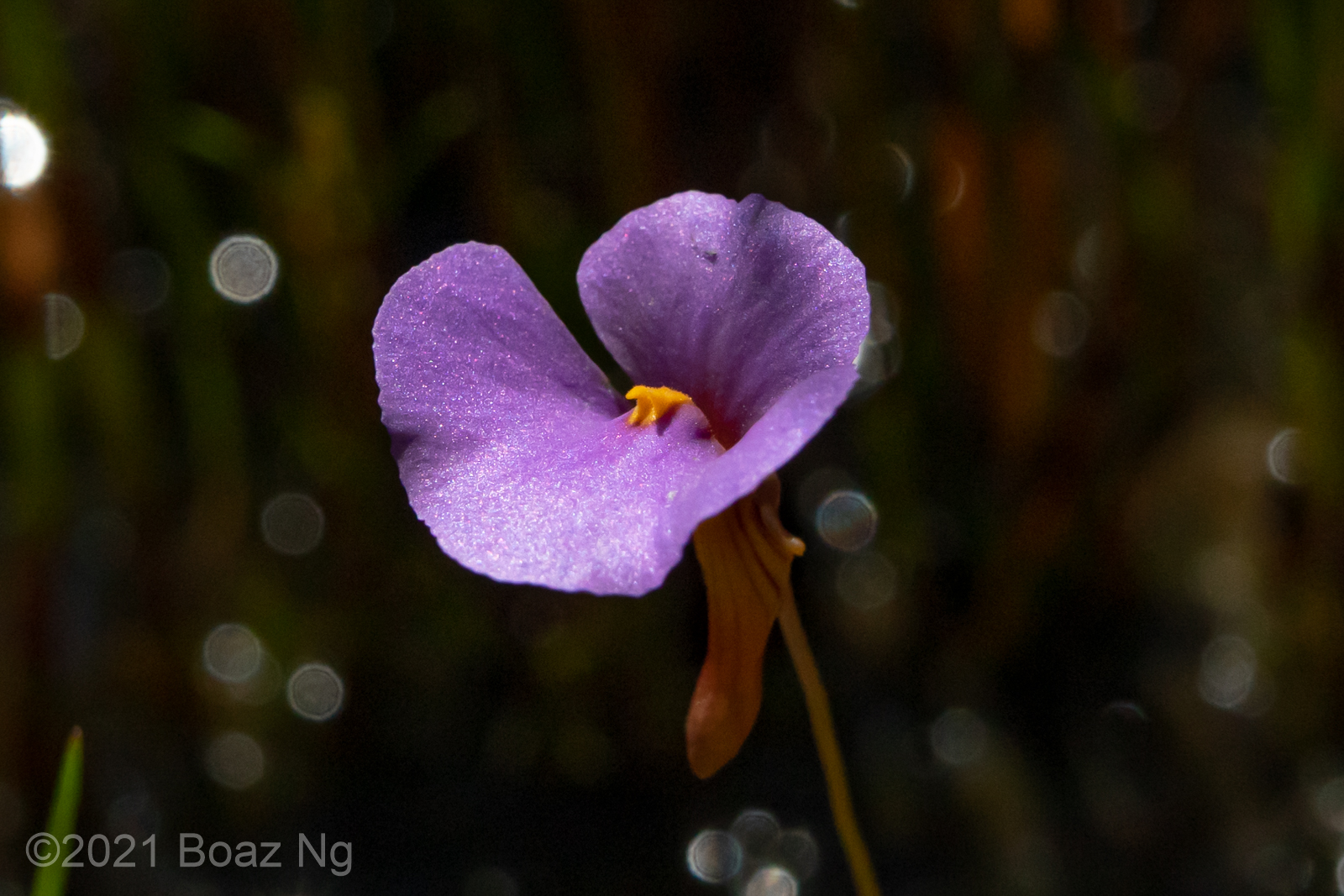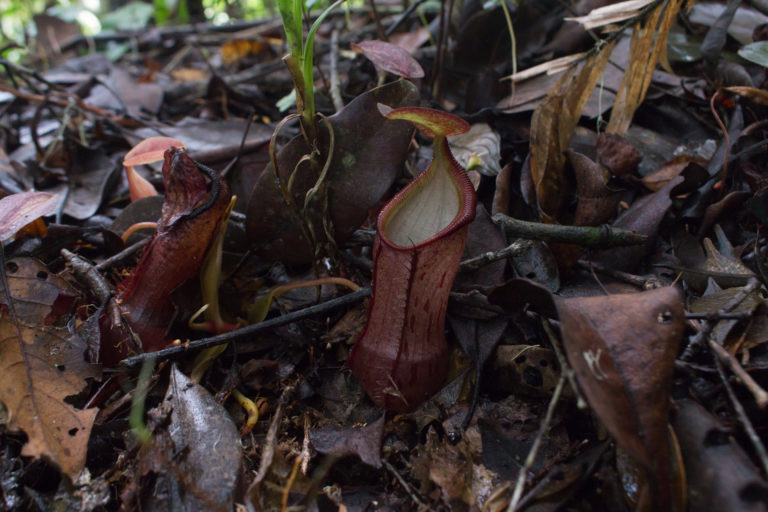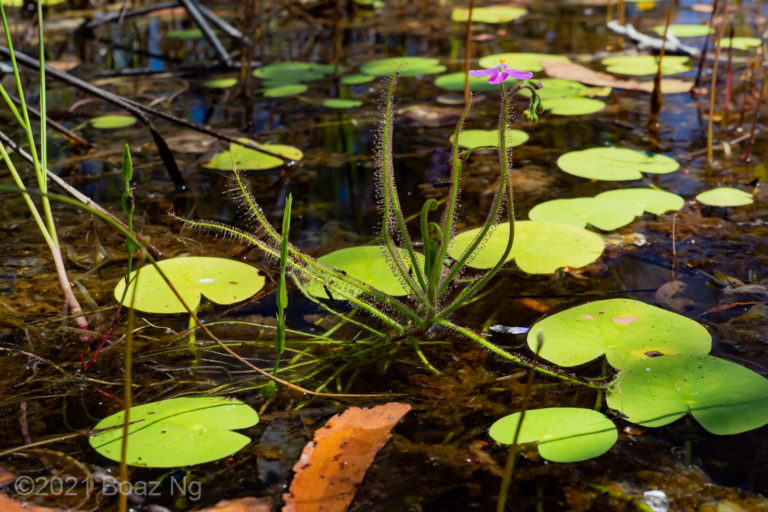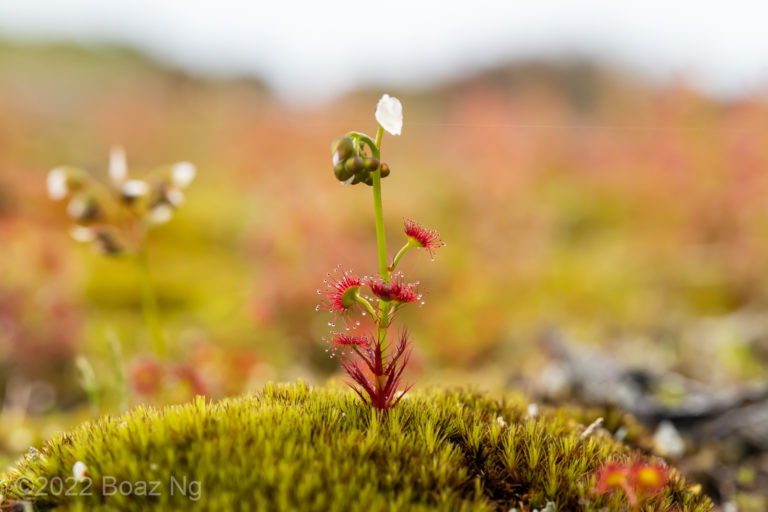Utricularia lasiocaulis is a terrestrial bladderwort native to tropical Australia. It’s flaring flowers are some of the most beautiful in the genus.
The current understanding of U. lasiocaulis envelopes a complex of closely related taxa that are united by morphological features such as hispid lower peduncles and bracts, and ‘squid leg’ like projections of the bladder traps. The type form around Darwin has medium sized flowers that are coloured bright purple. The back of the blooms are usually some shade of orange. The lower corolla lip is skirted in shape and flares widely to form an arch greater than 180 degrees. The upper corolla lip is large and also flaring. Two small orange ridges are present on the palate. The spur starts off wide near the center before unevenly reducing to a point.
The type form grows in wetter locations within seasonally inundated floodplains. I found it growing in mud in the Northern Territory around Darwin. It also exists in Western Australia and in isolated populations around northern and south-east Queensland. It is most similar in floral morphology to U. singeriana but can be distinguished by its pointed spur.
I have also seen other forms that vary in their flower morpholgy and colouration. At a glance, these populations don’t seem to be part of the species but personal communications with some experts who have examined their fine structural characteristics confirm their affinity. The taxanomy of the species complex is currently under review.
In the Litchfield National Park, a form with a lower corolla lip that is deeply divided into three lobes. The upper corolla lip is shallowly divided into two lobes. The form shares the orange backs, and hispid bracts with the type form (I did not examine the other features).
I also saw an abberant population in the Kakadu National Park that had mostly white coloured blooms with a three-lobed lower corolla lip and notched upper corolla lip. Again, the backs of the flowers were orange, and the bracts and lower part of the peduncle were hispid.
